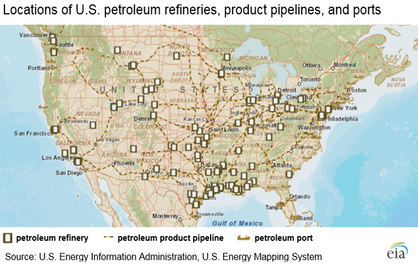|
Flint Hills Resources owns and operates a major oil refinery just south of St. Paul, Minnesota. According to their website, 'Based in Wichita, Kansas, Flint Hills Resources is an independent company and wholly owned subsidiary of Koch Industries, Inc., one of the largest private companies in America. According to Forbes magazine, the estimated annual revenues of Koch Industries, Inc. are as high as $100 billion. .... " The refinery, formerly known as the Pine Bend refinery, was built in 1955 and today has a capacity of processing more than 300,000 barrels of crude oil per day. They make gasoline, diesel, jet fuel and many industrial products used in manufacturing . (source, Wikipedia) The facility is a major industry and its environmental discharges are highly regulated to ensure that air quality and water quality standards are met. There have also been number of leaks, spills and releases over time. To help alleviate concerns of residents living in the area, a group was formed that serves as a communication link between the refinery and the community. This group, the Community Advisory Council for Flint Hills Resources Pine Bend Refinery, meets monthly for site tours and is updated on environmental and safety issues at the facility. According to their website, the CAC:
 The League of Women Voters of Minnesota was among the groups who helped to establish the CAC in 1998. This group grew out of a neighborhood nonprofit that was set up to address quality of life issues in the area, and was mediated by local and state elected leaders. You can read a detailed history of the formation of this group on their website. In November of 2021, Steve Sarantos, a member of the CAC, reached out to LWV UMRR with an idea - are there other industries that would benefit from this sort of oversight and communications strategy? From his experience, working with Flint Hills has been beneficial to both the industry and the community, and would be a good model for others. What do you think? Would you be willing to organize and serve on a group like this? Side note: the movement of crude oil and finished refinery products in the US  Crude oil comes to a refinery, and refined fuels are sent out, through a network of pipelines. The graphic to the left shows this network in the US; the article from the US Energy Information Agency includes information on how both crude oil and finished fuels are commingled through this network. This blog has carried a number of posts with concerns about pipeline construction and leaks. To read some of our blog posts on this topic, click on the "pipelines" category to the right of this post.
0 Comments
Leave a Reply. |
| LWV Upper Mississippi River Region | UMRR blog |
 RSS Feed
RSS Feed